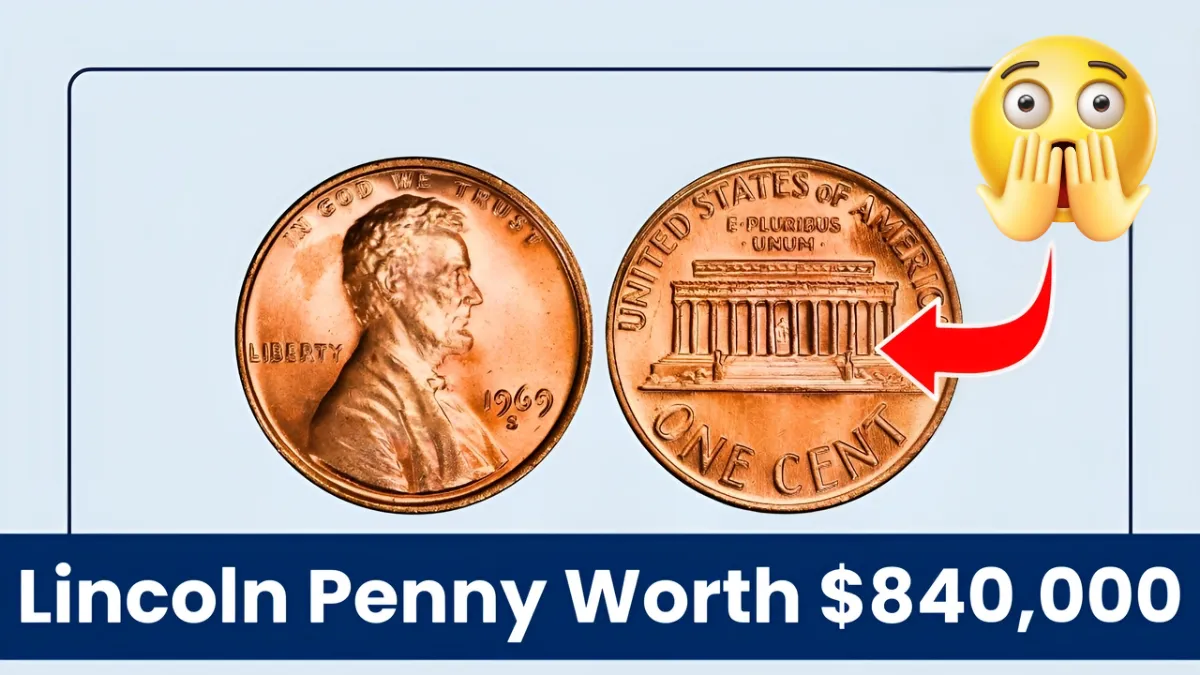Imagine sifting through your spare change and discovering a penny worth a small fortune. It might sound like a dream, but certain Lincoln pennies have fetched astonishing prices at auctions, with some reaching up to $840,000. Let’s delve into these rare coins and learn how to identify them.
The 1943-D Bronze Cent: A $840,000 Treasure
During World War II, the U.S. Mint shifted from copper to steel for penny production to conserve copper for the war effort. However, a few pennies were mistakenly struck on bronze planchets. The 1943-D Bronze Cent, minted in Denver, is the only known example of its kind. Its unique olive-brown hue with hints of crimson and well-preserved luster make it a standout piece. This coin fetched an incredible $840,000 at auction, making it one of the most coveted coins among collectors.
Other Notable Rare Lincoln Pennies
While the 1943-D Bronze Cent holds the record, other Lincoln pennies have also garnered significant attention:
- 1943-S Bronze Cent: Minted in San Francisco, this penny was also struck in bronze instead of the standard wartime steel. It features brown and crimson tones and sharp detailing, including fine strands in Lincoln’s hair and wheat stalks on the reverse. A small fleck of zinc near the date adds to its uniqueness. This coin sold for $504,000 at auction.
- 1944-S Steel Cent: In 1944, the U.S. Mint returned to using copper for pennies. However, a few steel planchets from 1943 were mistakenly used, resulting in the 1944-S Steel Cent. Only two examples are known to exist, with one selling for $373,750. Its bright surface and striking details make it highly desirable among collectors.
- 1943 Bronze Cent (Philadelphia): Approximately 20 of these coins are known to exist. Accidentally struck in bronze, this penny became legendary among collectors. One example sold for $372,000, showcasing a rich brown patina with hints of red.
How to Identify Valuable Lincoln Pennies
If you’re curious whether your pocket change holds a hidden gem, consider these factors:
- Date and Mint Mark: Check the year and mint mark (located below the date). Key years include 1943 and 1944, with particular attention to the mint locations: Denver (D), San Francisco (S), and Philadelphia (no mint mark).
- Metal Composition: In 1943, pennies were primarily made of steel. If you find a 1943 penny that appears bronze, it could be valuable. Conversely, 1944 pennies should be copper; a steel 1944 penny is rare.
- Weight: Copper pennies weigh about 3.11 grams, while steel pennies weigh around 2.7 grams. A simple gram scale can help determine the composition.
- Magnet Test: Steel pennies are magnetic, whereas copper pennies are not. Using a magnet can help identify the metal type.
Tips for Aspiring Coin Collectors
If the world of rare coins intrigues you, here are some steps to get started:
- Educate Yourself: Learn about coin grading, minting errors, and historical contexts. Numerous books and online resources are available for beginners.
- Join a Community: Engage with local coin clubs or online forums to share knowledge and experiences. Websites like the American Numismatic Association offer valuable resources.
- Invest Wisely: Start with affordable coins and gradually move to rarer pieces as your expertise grows. Always buy from reputable dealers to ensure authenticity.
Conclusion – Lincoln Penny
The next time you empty your pockets, take a closer look at your pennies. That humble coin could be a gateway to unexpected wealth. Happy hunting!
Read more:
- Cloth Business Ideas: कपड़ा व्यवसाय के 10 बेहतरीन आइडियाज, फैशन में करियर बनाने के सुनहरे अवसर
- Jewellery Business Ideas 2025: आभूषण व्यापार के 10 मास्टरस्ट्रोक्स, जो आपको बना देंगे बाज़ार का बादशाह!
- Wholesale Business Ideas 2025: 20 होलसेल बिजनेस आइडियाज जो बदल देंगे आपकी किस्मत
- Unveiling the 1976 Bicentennial Quarter: Could You Have a $200,000 Coin in Your Pocket?

